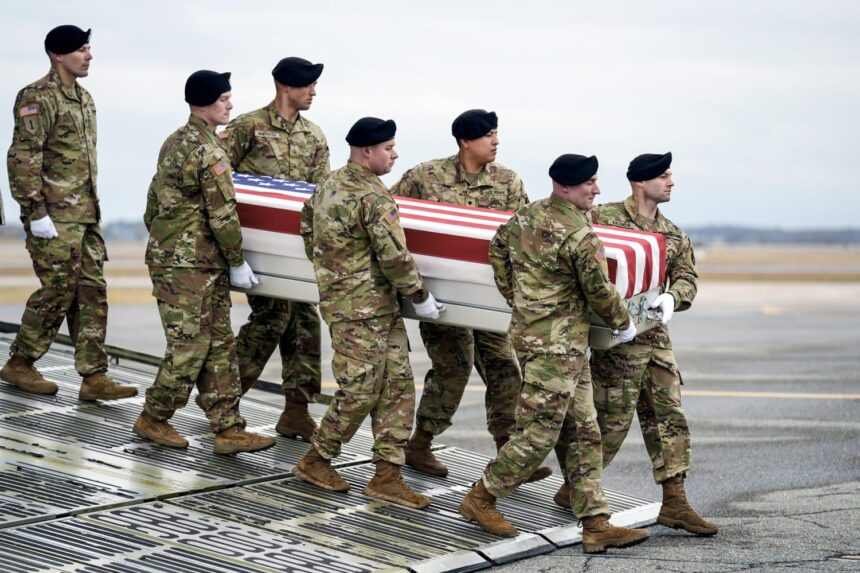Introduction
The term dignified transfer holds a deep significance, particularly in military traditions and protocols. It represents the respectful and ceremonial movement of fallen service members from the battlefield or a foreign location back to their homeland. This sacred ritual ensures that the ultimate sacrifice made by these brave individuals is honored with the utmost respect and reverence.
This process is a somber yet essential component of military customs, ensuring that every fallen hero receives the recognition they deserve. This article delves into the history, process, significance, and emotional impact of its ceremony, highlighting its importance for military families and the nation.
Historical Background of Dignified Transfer
The concept of dignified transfer dates back centuries, rooted in the traditions of honoring the deceased with military rites. In the United States, the practice became more formalized during major conflicts, particularly World War II, the Korean War, and the Vietnam War. The need for structured procedures for returning fallen service members became evident, leading to the establishment of standardized protocols.
Following the Vietnam War, the repatriation of fallen soldiers gained more visibility and reverence. In 1991, this process was officially adopted by the U.S. Department of Defense, this process reinforcing the commitment to treating every fallen service member with honor and respect. The ceremony has since evolved, incorporating meticulous procedures to uphold the solemnity of the occasion.
The Process of Dignified Transfer
This process is a carefully coordinated operation carried out by military personnel. Every step is meticulously planned to ensure a seamless transition from the point of recovery to the final resting place. The key stages include:
Initial Recovery and Preparation
When a service member dies in combat or during active duty, their remains are carefully recovered and prepared for transport. The process begins at the nearest military base or medical facility, where the fallen hero is placed in a transfer case, draped with the national flag.
Arrival at Dover Air Force Base
Dover Air Force Base in Delaware serves as the primary point for its operations in the U.S. The base houses the Charles C. Carson Center for Mortuary Affairs, where fallen service members undergo identification and preparation for final transport.
Dignified Transfer Ceremony
Upon arrival, this ceremony takes place. A team of service members, known as the carry team, solemnly carries the transfer case from the aircraft to a waiting vehicle. The ceremony is conducted with absolute silence and precision, reflecting the gravity of the moment.
Family Involvement and Support
Families of fallen service members are often present during its ceremony. Their participation is optional, but many choose to witness the process as a means of finding closure. The military ensures that families receive the support and respect they deserve throughout this difficult time.
Final Journey Home
After this ceremony, the fallen service member is transported to their final resting place, whether it be Arlington National Cemetery, a hometown burial site, or another location chosen by the family. The transportation is accompanied by military honors, ensuring a fitting farewell.
Significance of Dignified Transfer
The dignified transfer process holds profound significance for the military and the nation. It serves multiple purposes:
Honoring Sacrifice
Every service member who lays down their life for their country deserves the highest level of respect. This ensures that their sacrifice does not go unnoticed.
Providing Closure
For grieving families, witnessing this can be an important step in the healing process. It offers a moment to pay respects and find solace in the nation’s gratitude.
Upholding Military Traditions
Military customs and traditions are built on principles of honor, duty, and respect. This ceremony reinforces these values, preserving the integrity of military service.
Public Recognition
The ceremony serves as a visible reminder to the public of the cost of freedom. It fosters appreciation for the sacrifices made by service members and their families.
Emotional and Psychological Impact
This is an emotionally charged event for all involved. For families, it marks a poignant moment of farewell, often accompanied by grief and pride. For military personnel, participating in this is a solemn duty, reminding them of the risks they face in service to their country.
Many service members involved in this process undergo specialized training to handle the psychological aspects of their role. Witnessing loss on a regular basis can take a toll, making mental health support crucial for those performing this duty. The presence of military officials, chaplains, and fellow service members provides a sense of closure and support to grieving families. The ritual also reinforces the camaraderie among service members, emphasizing their commitment to honor their fallen brothers and sisters.
For families, this provides a sense of closure and recognition. The knowledge that their loved one is honored with the highest level of respect can offer some solace during an incredibly painful time. The presence of high-ranking military officials, chaplains, and fellow service members further underscores the nation’s gratitude.
It also has a profound effect on the service members who perform the ceremony. Many members of the Mortuary Affairs team describe their role in it as the most honorable and humbling duty of their careers.
Challenges and Considerations
Despite its significance, this process comes with challenges. Logistical complexities, international protocols, and unforeseen circumstances can sometimes impact the smooth execution of the ceremony. However, the military remains steadfast in its commitment to ensuring every fallen service member is honored appropriately.
Another challenge is the emotional weight carried by those who conduct this.Military personnel involved in the process often experience profound emotions, requiring resilience and support to cope with the somber nature of their responsibilities.
Public Perception and Media Coverage
The media plays a crucial role in raising awareness about the significance of this While coverage is often limited to respect the privacy of grieving families, it helps the public understand the sacrifices made by service members and the reverence with which they are honored.
Importance of Dignified Transfer
It is more than just a procedural act; it is a symbolic gesture of national gratitude. This practice:
- Honors the sacrifice of service members.
- Provides solace to grieving families.
- Demonstrates military discipline and respect.
- Reinforces the values of duty, honor, and country.
Dover Air Force Base and the Role of the Mortuary Affairs Team
Dover Air Force Base in Delaware is home to the largest military mortuary in the United States. It plays a central role in this process. The Mortuary Affairs team at Dover ensures that every dignified transfer adheres to strict protocols. Upon arrival, fallen service members are met by a its team, who carefully and reverently move the remains in a flag-draped transfer case from the aircraft to a waiting vehicle.
Challenges in Conducting Dignified Transfers
Despite its importance, conducting this comes with several challenges:
Logistical Hurdles
Coordinating transportation and military protocols requires meticulous planning.
Emotional Toll
The weight of handling a fallen comrade can be overwhelming for military personnel.
Ensuring Privacy
Balancing public recognition with family privacy is a sensitive matter.
The Future of Dignified Transfer
As military operations evolve, this process continues to adapt. Advances in technology, improved transportation logistics, and enhanced communication methods have streamlined the process, ensuring that fallen service members are returned home with efficiency and dignity.
Additionally, ongoing efforts to educate the public about this process help foster greater understanding and appreciation. Documentaries, news coverage, and firsthand accounts from military personnel contribute to raising awareness about this solemn tradition.
International Perspectives
Many countries have their own versions of its ceremonies, each adhering to their unique military traditions. Nations such as Canada, the United Kingdom, and Australia follow similar protocols to honor their fallen soldiers, reinforcing the global respect for military sacrifice.
The Future of Dignified Transfers
As military engagements evolve, this continues to adapt. Technological advancements, improved logistical support, and enhanced family assistance programs contribute to making the process even more respectful and efficient.
Conclusion
It is more than just a military procedure; it is a sacred tradition that embodies respect, honor, and gratitude. It ensures that fallen service members receive the recognition they deserve, offering solace to their families and reinforcing the nation’s commitment to those who serve.
Through its solemnity and precision, this serves as a lasting tribute to the bravery and dedication of America’s heroes. It is a reminder that the sacrifices made in defense of freedom are never forgotten, and that the nation stands united in honoring those who have given their lives in service to their country.
It is one of the most solemn and respectful ceremonies in the military, symbolizing the nation’s gratitude and respect for those who have made the ultimate sacrifice. It is a reminder of the values of honor, duty, and patriotism. The tradition of it will continue to serve as a profound tribute to fallen heroes, ensuring they are remembered with dignity and respect.







